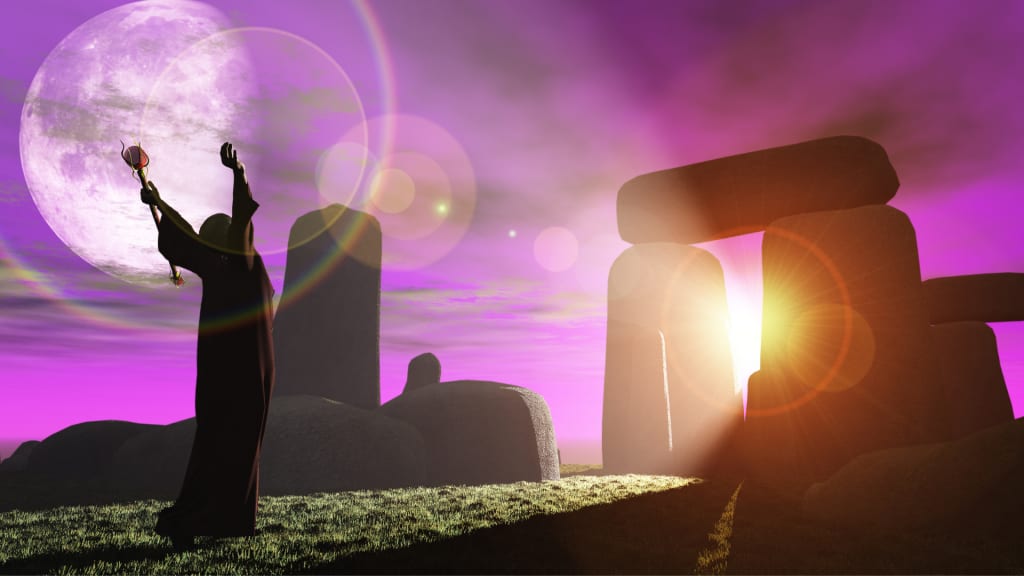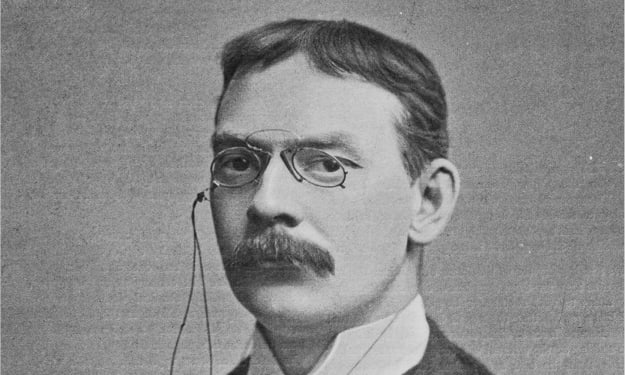
King Arthur is on the phone. He’s laughing hard at a story about the real roots of modern druidry. That’s Arthur Uther Pendragon, born John Timothy Rothwell, who sees himself as the reinvention of King Arthur’s spirit in the body of a modern-day warrior, biker, rabble-rouser, road protestor and, as English Heritage probably refer to him, ‘Stonehenge stakeholder’.
Arthur is talking about the National Eisteddfod, an event intertwined with the reinvention of druidry. “The first Eisteddfod wasn’t in Wales, or even in Welsh,” Arthur chuckles. “It was in English, on Primrose Hill in London.”
Arthur is referring to the Eisteddfod of 1792, the earliest agreed date for the rebirth of druidry (though some point to evidence of a gathering in 1717, held by Irish satirist John Toland). The history of modern druidry is full of twisted tales and diversions.
“The original druid revival was started by a couple of Christian priests,” says druid Adrian Rooke. English antiquarian and vicar William Stukeley and Welsh poet and literary forger Iolo Morganwg, who was as devoted to the Welsh Spiritualist Church as he was to druidry, brought druidry into the modern period.

Following Druid Orders
The druid movement today is a tangled web. Druids rally to a number of organisations, including the British Druid Order, founded in 1979; the Druid Network; the Order of Bard, Ovates and Druids (OBOD); and the Council of British Druid Orders.
Each strand of druidry involves, in varying proportions, religion, music, philosophy, a literary tradition, and political protest. A guiding principle unites all druids, though: a reverence for nature and ecology, and a spirituality that nods at the universal sacred wisdoms of Earth-based faiths. A common motif in all modern druidry is the need to re-establish the connection that our ancestors had with the land.
“Some believe the word ‘druid’ comes from a Gaelic word for oak,” says Rooke, of OBOD. “The ancient druids watched nature, they saw the oak was the most giving of trees — it supports hundreds of species of flora and fauna. Each oak is in itself its own universe.”
The roots of environmental concern, like the oak, run deep. Since the 1970s, druids have increasingly aligned themselves with ecological movements but a connection with nature has always been a part of their belief system and their rituals seek to unite people with the land they live upon.
The Unwritten History of the Druids

Information about ancient druidry is sparse: it was an oral tradition, so they left no written account of themselves. The oldest detailed description comes from Julius Caesar in his Commentarii de Bello Gallico (circa 50 BC), who claimed they were one of the two most important social groups in Celtic culture, alongside the nobles.
They were not just priests but judges, philosophers, healers, teachers and keepers of the lore. And they had to work hard — Caesar estimated it took 20 years of study to become a druid.
“They would learn 300 or more stories,” says Rooke. “They had to make a lineage of their chieftains going back hundreds of years. The fact that you could learn those names was part of the immortality of the individual.”
Ancient druidry was centred on the sacred natural places of these islands. “The whole of the British Isles was a very spiritual place, people came here from the continent to seek spiritual direction, training and teaching, in the same way that Rome was a place of pilgrimage in the Middle Ages,” explains Rooke.
Later writers also referenced the druids, including Cicero and Tacitus. The Romans clearly feared the druids’ potential to unite, rabble-rouse and engage in guerrilla warfare. However, the druids eventually suffered two calamitous defeats at the hands of Romans, on Ynys Môn (Anglesey). These defeats marked the end of ancient druidry. By the 2nd century, the druids had disappeared from the written record.
Playing the past
King Arthur — the reincarnation of Britain’s greatest tribal chieftain — styles himself on these ancient counterparts. “From my point of view, I don’t like the term ‘neo-druid’ . I’m closer to the ancient druids and the proto-druids that built Stonehenge.”
For all their common traits, the concept of ‘druid’ is such a liquid idea, it’s hard to deny or agree that Stonehenge was built by them. It is, therefore, both easy to refute and a little lazy to concur, but the modern king draws enough parallels to take on the mantle of the ancient version of himself.
“My order is a warrior arm of the druid movement — we fight for truth, honour and justice”, says Arthur who underlines that the fight is peaceful — he insists on nonviolent direct action of the kind exercised by peace campaigners and road protestors of the recent past.
Today, just as King Arthur rides a motorbike rather than a horse, druidic teaching has entered the digital age. OBOD runs remote learning courses. Rooke, who is a tutor with OBOD, estimates 10–15,000 people have passed through OBOD’s training. Studies are in three parts: ‘bards’ learn the central tenets of druidry and its rituals; ‘ovates’ then practise divination, working with ancestral spirits and healing with herbs and trees; and finally ‘druids’ consolidate all that has been learned.
It’s striking how history repeats itself. Today’s ‘new’ druids have much in common with their ancient counterparts.
Support writers without interruption from adverts. Read all my stories. Get unlimited access to the rest of Medium. I get a referral fee on your subscription at no extra cost to you, so it helps me too. Join Medium here. It doesn’t cost much and you can stop, hassle-free, at any time.
Originally published on www.countryfile.com
About the Creator
Ian Vince
Erstwhile non-fiction author, ghost & freelance writer for others, finally submitting work that floats my own boat, does my own thing. I'll deal with it if you can.






Comments
There are no comments for this story
Be the first to respond and start the conversation.